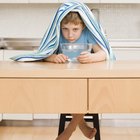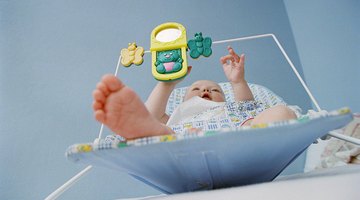Side Effects of Steam Vaporizers
Steam vaporizers are less likely than cool-mist humidifiers to cause excessive mold and bacterial growth, but, because vapor is made in these machines by using a heating element to cause steam, the risk of a burn is greater. Tap water can be used in steam vaporizers, making them much less expensive to operate than humidifiers that require distilled water. To avoid injury and other risks, users should follow manufacturer and doctor's instructions, change the water every day and clean the entire machine regularly.
Burns
AskDrSears.com recommends parents of children with stuffy noses and congestion use a hot steam vaporizer in their child's bedroom at night, because the warmth and humidity helps keep children's chests and noses clear. However, because vaporizers operate by boiling water and releasing moisture in the form of steam into the air, vaporizers, the water and steam are very hot, and many pediatricians prefer humidifiers over vaporizers because children can get burned or scalded. To prevent burns, parents must keep hot steam vaporizers out of children's reach.
Infants can also be burned if someone trips over the vaporizer's electrical cord, so caretakers must insure that cords are placed where they cannot be tripped over.
Fire

Can You Take a 4-Month-Old to the Beach?
Learn More
Unplugging or disconnecting the vaporizer when it is not in use or when leaving home will minimize the risk of fire if there is an electrical short circuit.
Mold and Other Biological Organisms
The room where a vaporizer is placed should be aired out during the day, because warm and humid environments are perfect breeding grounds for molds, bacteria and dust mites. Users should never use a vaporizer or humidifier so often that the air in the room becomes overly moist, and should make sure that carpeting, drapes, tablecloths, bedding and other absorbent materials do not become damp.
Dr. Robert W. Steele, M.D., pediatrician at St. John's Regional Health Center in Springfield, Missouri, explains that because the water is boiled in steam vaporizers, they are less likely than cool-mist humidifiers to spread bacteria or molds into the home.
Allergies

Are Humidifiers or Vaporizers Good for Infants?
Learn More
People with allergies are more susceptible to allergens from organisms such as bacteria, mold and dust mites that thrive in the humid environment created by vaporizers or humidifiers.
The EPA warns that if people notice condensed drops of water on windows, floors or walls, they should move the humidifier, reduce its humidistat level, use it less or make sure it is turned off for certain periods of the day or night.
Worsening Asthma
Because humidity in the air can allow mold to grow in carpeting and other hidden areas of the house, for children with asthma or chronic respiratory illnesses, increased exposure to mold can cause symptoms to worsen.
Humidifier Lung and Fever
Humidifiers and steam vaporizers may recirculate contaminated air if organisms accumulate in them. This may cause hypersensitivity pneumonitis, a rare condition commonly called "humidifier lung." Phyllis Adams, associate professor at Penn State's College of Agricultural Sciences, explains that humidifier lung and humidifier fever are caused by "heating and cooling systems that recirculate water from a reservoir that has been contaminated by microorganisms."
Chemical Dispersal
Care should be taken when using cleaning products or disinfectants on vaporizers or humidifiers. All surfaces that come in contact with the vaporizer's water should be cleaned with 3 percent hydrogen peroxide solution. The EPA suggests to rinse the tank thoroughly to prevent chemical dispersal into the air when the machine is operating.











